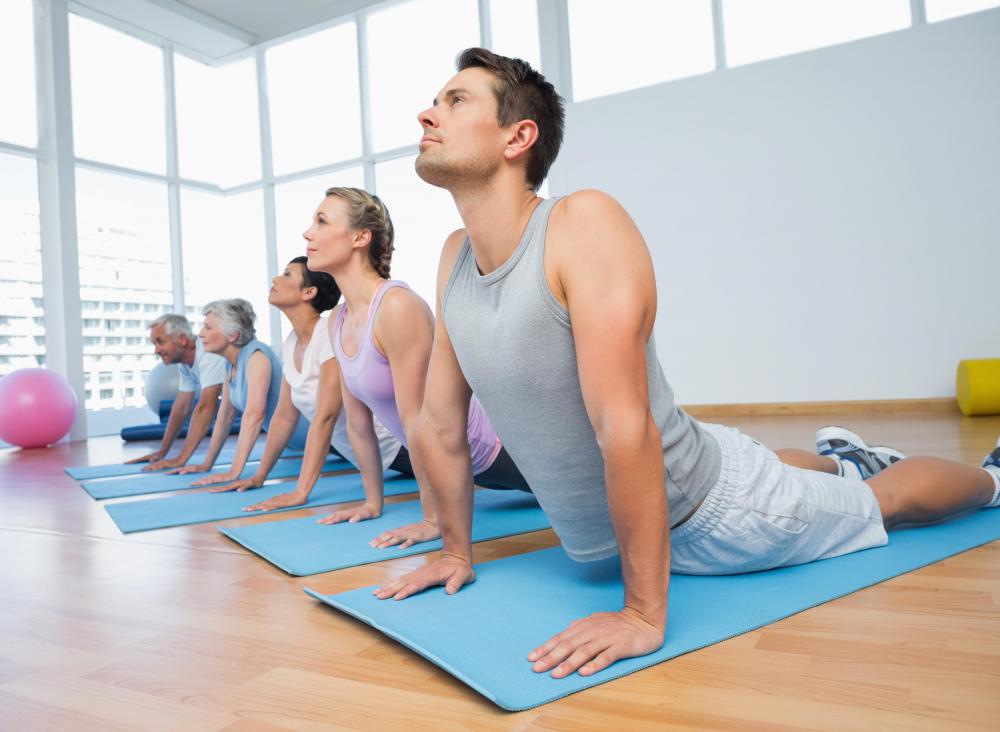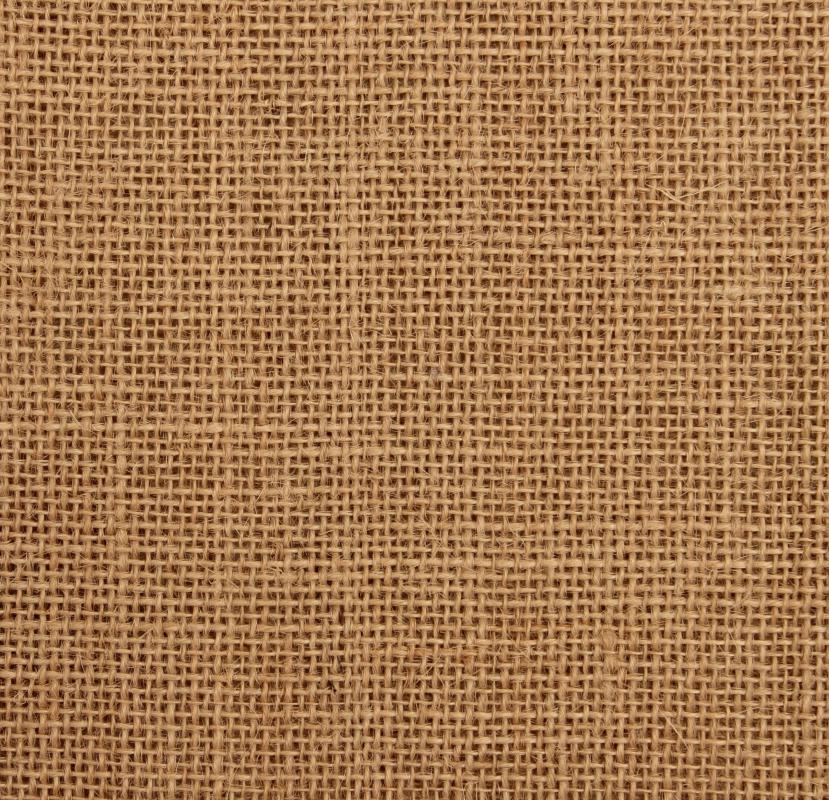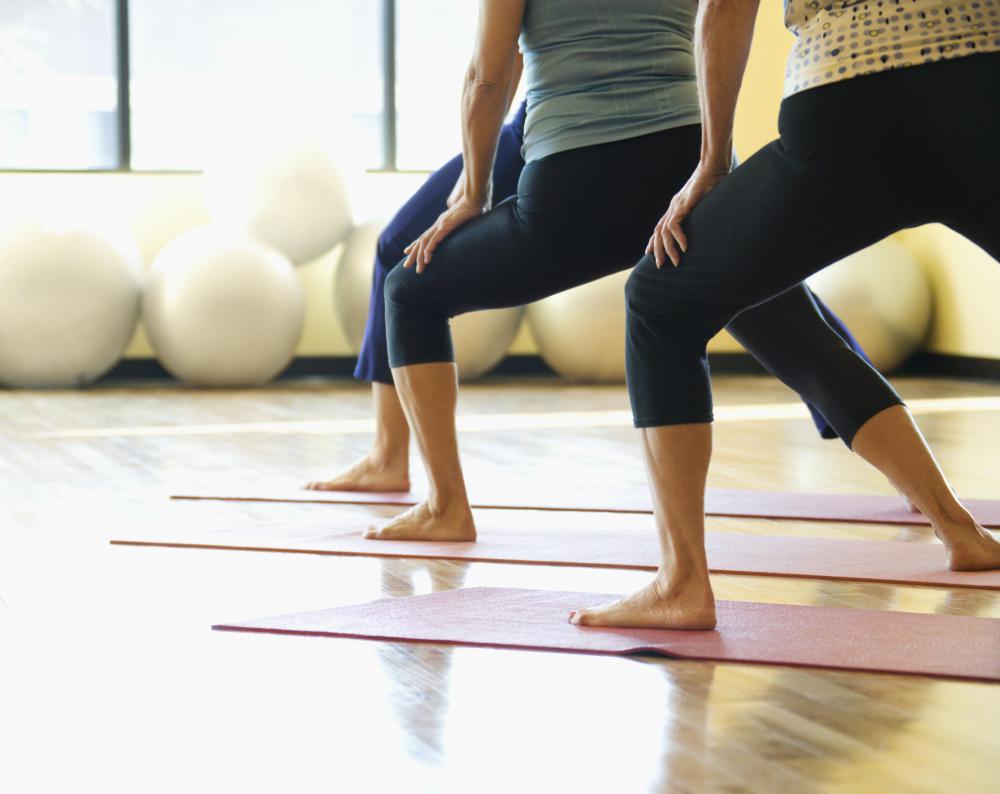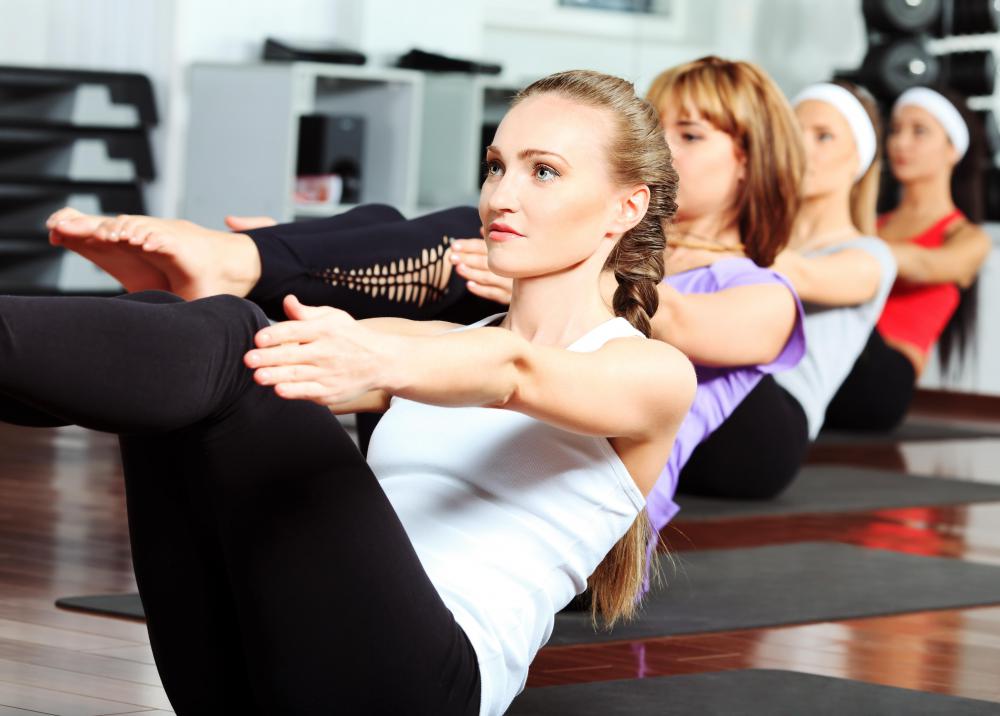At WiseGEEK, we're committed to delivering accurate, trustworthy information. Our expert-authored content is rigorously fact-checked and sourced from credible authorities. Discover how we uphold the highest standards in providing you with reliable knowledge.
How do I Choose the Best Yoga Mat?
The best yoga mat for you will be comfortable, functional, and fit into your budget. There are many types of yoga mats, made of synthetic and natural materials. There are also a wide range of decorative mats, but yoga demands different characteristics from the mat. Different styles of yoga call for different characteristics as well, so it's important to take your yoga style into consideration before making a purchase. The thickness, stickiness, size, type of material, and ease of washing are the features which should guide your choice.
Typically, a yoga mat is 0.125 inches (3.17 mm) thick. Travel mats are even thinner, as little as 0.0625 inches (1.58 mm) thick. Although thinner mats are usually lighter and easier to pack, they do not provide the comfort of thicker mats. If you find that you are often uncomfortable during your yoga routine, due to excessive pressure on your elbows, knees, or hips, then you may need a thicker mat. It should not exceed 0.25 inches (6.35 mm), however, since thicker mats can effect connection to the floor or cause instability while holding positions.

After deciding on the thickness of your mat, consider the amount of stickiness you need for your style of yoga. Stickiness is the grip of the material. It keeps you from sliding while holding positions, but also restricts ease and fluidity of motion. Aerobic intensive workouts often require higher stickiness than other types of yoga, but a mat with less stickiness is more suitable for traditional meditative yoga. The stickiness of a yoga mat depends on the material from which it is made.

The classic yoga mat is usually made of polyvinyl chloride (PVC), which is man made. Other materials used for yoga mats are natural rubber, cotton, jute — a grass fiber, and cork. Natural rubber and PVC mats have a high level of stickiness and durability, and they do not absorb moisture. Cotton and grass fiber mats do not have a lot of stickiness, which may make achieving certain positions difficult. Compared to PVC and natural rubber, cotton and grass fiber mats wear out very quickly and must be replaced often.

Often, the stickiness of a mat and its tendency to absorb moisture are inversely related. Mats with high stickiness often repel moisture, which is usually a desirable trait, since moisture often creates a foul odor when it becomes trapped in the material's fibers. Since mats will come into contract with moisture regularly from your workout, make sure that your mat is easy to clean. Look for machine washable fiber mats or PVC and natural rubber mats that can be wiped clean with a damp cloth. Avoid mats which require dry cleaning, since this is costly and causes excessive wear and tear on your mat.

Whatever thickness, stickiness, and material you chose for your yoga mat, you will find that there are a variety of styles and sizes available for reasonable prices. Chose a mat that is large enough for every type of position, including lying down. If you are exceptionally tall, you may have to have a custom mat cut to get the correct length. Mats come in almost every imaginable color, and many have attractive prints or weaves. A more decorative yoga mat, or a mat made of special material, may cost more than other yoga mats.
AS FEATURED ON:
AS FEATURED ON:
















Discussion Comments
@Sporkasia - I can relate to misplacing things. You should buy the yoga mats that donate a part of the purchase price to a charity. At least this way when you have to buy a new one you will also be helping out a charity. My girlfriend buys the pink ones that help with breast cancer research.
This may be because I am a scatter brain, but for whatever the reason, I am always losing and misplacing items, including my yoga mats. Initially, I bought the expensive yoga mats. When I lost a couple of them, I bought a yoga mat bag. I lost the bag and the mat. I left it someplace and I do not know where.
After too many lost and misplaced mats, I accepted the fact that this is part of my reality. So, I now buy cheap yoga mats, and I don't feel as bad about having to replace them when they disappear.
When I began taking my first yoga class I was very excited. I was like a kid preparing for the first day of school when I went out to buy my yoga mat. The salesperson where I bought the mat showed me several mats and explained what was so good about each one of them.
By the time she had shown them all to me, I was so confused that I simply asked her which one she thought was best. I don't know whether it was a coincidence or not, but the yoga mat she recommended was also the most expensive one of the ones she had shown me. I bought it anyway.
As I said, I was new at yoga at this time. So when I used the mat and it rubbed my toes and made them a bit sore, I thought this was just part of the routine. Later I learned that the texture of the particular type of mat I had bought was actually the issue. This mat had more grip, which was good in a lot of ways, but the roughness really began to bother my toes.
Since then, I have bought several other mats, each with its pros and cons, but I have yet to find the perfect one that eliminates all of my issues.
Post your comments